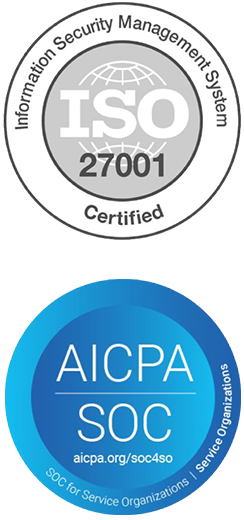Justperform
- EPM
- Thought Leadership
Key factors to consider before investing in finance technology
Finance leaders play a crucial role as drivers of organizational growth. They are responsible for making strategic decisions that shape the future of their companies. One key aspect of their decision-making process is investing in technology to enhance the efficiency and effectiveness of financial planning, consolidation, and reporting processes.
In today's fast-paced business landscape, modern finance leaders must prioritise technology investments that have the greatest impact. They need to develop a cohesive and forward-thinking technology strategy to enhance financial responsiveness to ever-changing business realities. It comes as no surprise that the demand for technological advancements has reached unprecedented levels.
According to the Gartner CEO and Senior Business Executive Survey, 92% of CFOs plan to increase their investment in technology, a significant increase from 70% in 2021.
However, even with their expertise and experience, finance leaders can sometimes overlook critical elements when evaluating potential technology purchases. In this article, we will delve into four major elements that finance leaders should not ignore when making purchase decisions.
1. Building a finance technology roadmap
When it comes to finance, having a robust technology roadmap is crucial. Evaluating the current systems supporting key finance activities is essential in identifying gaps in your technology portfolio. From there, you can pinpoint the best technology opportunities to include in your roadmap.
Even if you're currently in need of a solution for your FP&A, having a finance technology roadmap is a game-changer. Whether it's your accounts payable system, financial close system, RPA solutions, or data analytics tools, compatibility is key. By keeping your future technology purchases in mind, you ensure seamless integration with existing systems.
To ensure a successful roadmap, it's important to establish clear roles and responsibilities for all the relevant stakeholders.

For the successful implementation of new technology, it is essential to involve all relevant stakeholders, not just in building a roadmap. Finance leaders should proactively engage stakeholders in the decision-making process.
According to Gartner, an average of 11 stakeholders are involved in a purchase decision.
By actively including stakeholders, finance leaders can achieve better outcomes. This approach allows for gathering valuable insights, addressing concerns, and fostering a collaborative environment, leading to a smooth and effective adoption of technology.
2. Thoroughly researching the technology
In today's complex business landscape, finance managers are facing unprecedented challenges. According to Netsuite, a staggering 68% of finance managers claim that their job is even harder now than it was in 2019. Why? Well, the culprit lies in the increasingly diverse financial data, ever-changing regulatory requirements, and the constant demand for accurate financial forecasting.
But fear not, there is a solution. By embracing new-age technology, finance teams can conquer these challenges head-on. Imagine a unified platform that seamlessly integrates with your existing systems, offering scalability and comprehensive solutions to effortlessly manage planning and consolidation tasks.
Yes, the need for technology has never been more pressing, but it's crucial to find the right fit.
Surprisingly, only 19% of CFOs believe that their current FP&A system is efficient, as reported by Oliver Wyman.
One of the biggest mistakes that finance leaders make is failing to conduct thorough research before investing in new technology. This means understanding if the technology can address their specific requirements and whether it can easily adapt to future growth.
Without careful consideration, finance teams can end up spending more time maintaining and operating the system rather than focusing on value-added activities. That's why it's paramount for finance leaders to evaluate how a new technology will impact their team's workload and productivity. Ignoring this crucial element can lead to investing in a platform that doesn't align with the company's goals, burdening the finance team even further.
3. Assessing the hidden costs in the total cost of ownership
When it comes to embracing new technologies, finance leaders often overlook the total cost of ownership. While budget considerations are important, focusing solely on the initial purchase price is short-sighted. The hidden costs of implementation, training, and maintenance can significantly impact the overall cost of adoption. Ignoring these factors can lead to unforeseen expenses and resource strain.
Here is a break down the key components of the total cost of ownership:
- Licensing Costs: Fees associated with purchasing software licenses for the new technology or platform.
- Implementation Costs: Expenses include hiring external consultants, data migration, end-user training, and the internal man-hours spent on implementation.
- Infrastructure Costs: Investments required to support and integrate the new technology including servers, and cloud licensing.
- Application Life Cycle Management (ALM) Costs: Ongoing expenses for managing and updating the software throughout its life cycle. It also includes change management costs.
When assessing the total cost of ownership, it's important to consider all angles.
Looking at the bigger picture, evaluating the total cost of ownership over a three-year timeframe provides a fairer and more accurate representation of the financial impact.
By carefully evaluating these aspects, finance leaders can make well-informed decisions that avoid unexpected financial burdens associated with adopting new technologies or platforms. Taking a holistic approach to cost analysis ensures that the chosen solution aligns with the organization's budget and strategic goals, leading to a successful implementation and long-term value.
4. Planning for solution downtime
Don't overlook the importance of downtime planning when considering new technology. System outages can cause chaos and significant financial losses. Surprisingly, many organizations don't have a solid plan in place for these situations.
Without a robust downtime plan, there is a risk of unexpected operational disruptions, loss of vital financial data, and decreased revenue. That's why finance leaders must carefully evaluate a provider's service level agreement (SLA), which outlines reliability and procedures for handling downtime.
A comprehensive plan should include business continuity and disaster recovery strategies. This ensures quick restoration of operations and data security, minimizing the impact on business functions and maintaining stakeholder trust.
Remember, even the best systems can experience downtime. However a well-executed plan can greatly reduce risks and keep your business running smoothly, no matter the circumstances.
Finance leaders play a pivotal role in the success of their organizations and must prioritize technology investments that have the greatest potential to benefit their companies. They should focus on building a finance technology roadmap, researching the technology, assessing the hidden costs, and planning for downtime. This would help in effective technology adoption driving business agility in today's fast-paced world.
JustPerform could be the perfect solution for your budgeting, forecasting, and financial close in your finance technology roadmap. Find out how.
Finance leaders are responsible for making strategic decisions that drive their organizations' growth and have increasingly prioritized technology investments to achieve this.
- When adopting new technology, it is essential to involve all stakeholders in the decision-making process.
- Thorough research into potential purchases is important, ensuring seamless integration with existing systems and meeting the company's goals.
- Assessing the total cost of ownership over a three-year timeline is crucial for avoiding unexpected financial burdens.
- Planning for system downtime and creating a robust SLA ensures quick restoration of operations and data security.
You may also like
No Related Posts Found

